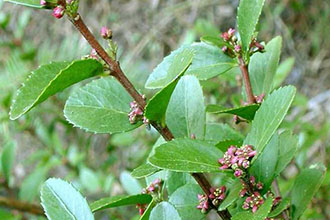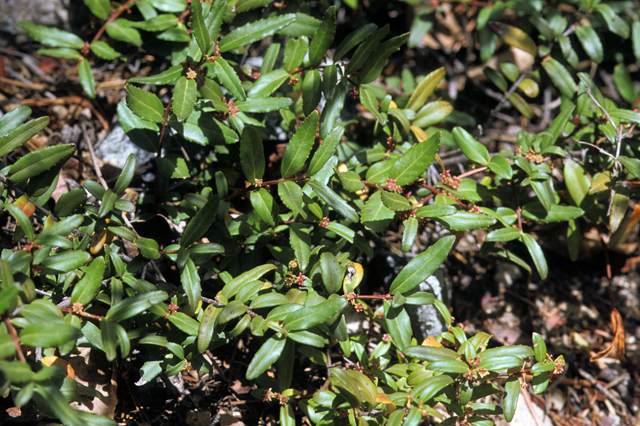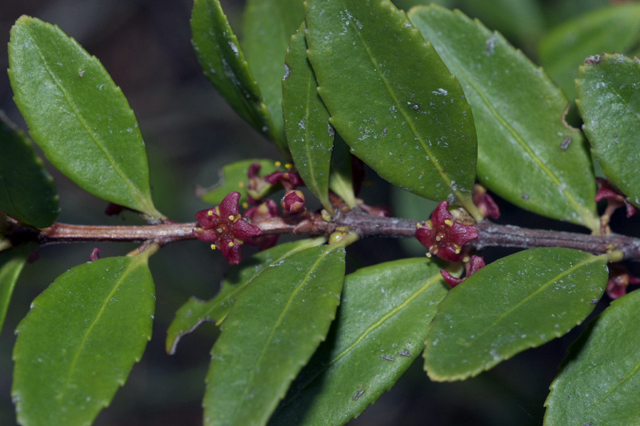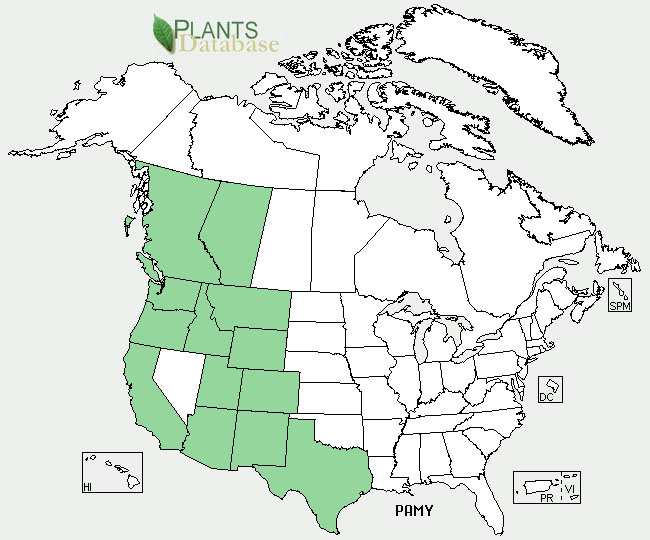Taxonomy: Kingdom - Plantae (plants). Subkingdom - Tracheobionta (vascular plants). Superdivision - Spermatophyta (seed plants). Division - Magnoliophyta (flowering plants). Class - Magnoliopsida (dicotyledons). Subclass - Rosidae. Order - Celastrales. Family - Celastraceae (bittersweet). Genus Paxistima Raf. (paxistima). Species Paxistima myrsinites (Pursh) Raf. (oregon boxleaf).
Ecology: Oregon boxwood is a native, cool-season, evergreen shrub, with maroon flowers. It is low growing, reaching heights of 0.3-1 m, sometimes spreading, and densely branched. Its leaves are oblong and glabrous. Its fruit is a one- to two-seeded capsule. Oregon boxwood grows on dry to moist sites in shaded mountain areas as high as subalpine habitats, but can be found at sea level in California. It can grow in frost pockets in steep ravines or in open woods, ridgetops, and glades. Oregon boxwood is an indicator species in several western habitat types and plant communities. It is a climax shrub and can tolerate both sun and shade, but it usually indicates dry to moist, cool sites and well-drained soils.



